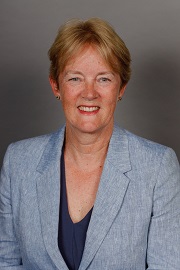2020 has been a challenging year for the health sector, with the COVID-19 pandemic putting great pressure on services and driving the adoption of technology among NHS and social care organisations at a pace never before seen.
And this is likely to continue to be the case into 2021, with services facing a second, and possibly third, wave of Coronavirus cases at the same time as struggling with the backlog of patients that has built up over the past nine months.
There are now estimated to be more than 140,000 patients waiting over a year for treatment, while the number of patients admitted for routine procedures in hospitals was down 27% in September. And there were half a million cancelled surgeries from the 12-week elective surgery hiatus.
Recently the British Medical Association and the Health Foundation estimated that a further £10billion would be needed to cope with the increase in demand 2021 will bring.
But the Chancellor of the Exchequer’s £3billion injection announced in the 2020 Spending Review last month, fell somewhat short.
Telehealth skyrocketed in response to the realities of COVID-19 and we will continue to see utilisation expand into 2021 because it enables increased and more-flexible access to healthcare services
Justin Hall, vice president and general manager for EMEA at iRhythm Technologies, explains: “Earlier this year, as NHS trusts struggled to deal with the first wave of COVID-19 cases, the majority of non-essential appointments were, understandably, put on hold.
“In addition, many patients actively avoided seeking medical attention in person through fear of catching the virus or in an effort to avoid putting additional strain on healthcare resources.
“As a result, we saw an immediate shift towards telemedicine, with video consultations, direct-to-patient shipping models, and remote care quickly becoming the ‘new normal’.
“And, in 2021, digital-first primary care will evolve even further.
The ‘new normal’
“With the HealthTech industry accelerating to meet higher demand, and a backlog of patients continuing to build; the sector will be forced to consider new ways of minimising strain, without compromising on care.
“Fortunately, modern technologies are being researched and developed at an unprecedented rate, with innovative companies creating solutions that address multiple needs and challenges.
“This means patients will still have access to the same level of expertise and services, while medical practitioners will benefit from a more-streamlined approach.” <.p>
Modern technologies are being researched and developed at an unprecedented rate, with innovative companies creating solutions that address multiple needs and challenges
Barbara Harpham, chairman of The Medical Technology Group, adds: “COVID has driven change in many aspects of life; speeding up the adoption of new technology as the world has adapted to its more-socially-distanced reality.
“Almost all GP practices have started using some form of remote consultation platform and patients have embraced it, most saying that it compares favourably to face-to-face contact with their clinician.
“New remote care solutions have seen a surge in recent months, too.
“For example, we’ve seen a pilot of a tele-dermatology service using Artificial Intelligence to reduce delays in skin cancer detection and treatment, and a home monitoring test for chemotherapy patients testing levels and activity of neutrophil blood cells.
“The fast-tracked introduction of stereotactic ablative radiotherapy (SABR) technology earlier in the year also demonstrates how technology can make a difference.
“Minimally invasive, with doses of radiation concentrated on the cancer tumour, SABR means patients are treated quickly and spend less time on the ward recovering.
“This type of innovation can make a real difference to the way the NHS functions, and help it recover from COVID more quickly, increasing throughput and efficiency, reducing the backlog, and getting patients back to normal life.”
COVID has driven change in many aspects of life; speeding up the adoption of new technology as the world has adapted to its more-socially-distanced reality
Better integration
And Diana Nole, executive vice president and general manager for healthcare at Nuance Communications, told BBH: “While telehealth skyrocketed in response to the realities of COVID-19, we will continue to see utilisation expand into 2021 because it enables increased and more-flexible access to healthcare services.
“As we build on the acceptance of telehealth among patients, providers, health systems, and payers in 2020, there will be a stronger focus on the digital patient experience and provider satisfaction moving forwards.
“For example, what does a virtual waiting room look like? How do patients interact with nurses and share their medical history? And how will physicians get seamless access to patient records, take clinical notes, and interact with remote patients?
“Effectively addressing those questions will require deeper system integrations and information-sharing across healthcare provider and payer networks to drive better patient and clinician experiences.”

Dr Jason Lee, director of The Open Group Healthcare Forum
One patient, one record
Also predicting greater uptake of innovation data solutions, Tracey Lethbridge, head of UK public sector at OpenText, said: “With new models of care emerging and evolving all the time, it’s become increasingly clear that the NHS will need to continue adopting more-effective ways to manage and share data between organisations, geographies, systems and individuals.
“Through the creation of a ‘one patient, one record’ environment, NHS clinicians will be able to access the necessary information more easily – regardless of where it is or what form it is in – to more effectively commission and monitor services that reflect patients’ needs.
“Lack of a uniform digital approach to information management can lead to delayed treatments, increased waiting times, and overworked healthcare professionals. And, most importantly, without accurate and accessible data at the point of care, a patient’s life could even be on the line.
We anticipate a far-greater focus on interoperable data platforms in 2021, enabling healthcare organisations to gather all data from people, systems and devices to establish a complete view of the patient and improve patient care as a result
“Ultimately, accurate and timely patient data is at the heart of delivering high-quality care, both during and after the current pandemic.
“But, in order to achieve patient-centricity, healthcare organisations will need to create a complete view and understanding of the patient.
“And this requires being able to take data from any source and deploy it effectively within operations.
“As such, we anticipate a far-greater focus on interoperable data platforms in 2021, enabling healthcare organisations to gather all data from people, systems and devices to establish a complete view of the patient and improve patient care as a result.”
Data sharing will also be central to the rollout of the COVID-19 vaccine over the coming months.
Speaking to BBH this week, Dr Jason Lee, director of The Open Group Healthcare Forum, said: “We’ll see requirements for health information interoperability extend well beyond traditional concerns around compatibility between electronic health records used by healthcare systems and providers.
“A common monitoring system for immunisation information must be agreed by key vaccine distribution and administration organisations – and on-boarding and training programmes must be provided.
“This way, countries across the world will be able to successfully vaccinate hundreds of millions of citizens.
“And, crucially, the agreed monitoring system must be based on common terminology.
“This will allow it to track vaccine supply, identify who receives recommended doses of vaccine, design key communication outreach to subpopulations, and collect and analyse safety and efficacy data via pharmacovigilance surveillance.
Open standards are key for meeting these needs and The Open Group is developing a Mass Vaccination Plan standard to launch early next year.

Tracey Lethbridge of OpenText
“This will be globally relevant and identify the core capabilities needed to ensure that populations receive a safe and effective vaccine”, said Dr Lee.
AI technologies of all kinds are particularly likely to dominate the healthcare marketplance in 2021.
Hall said: “Compared to recent years, 2020 has seen some of the most-promising developments for the widespread adoption of modern, AI-driven solutions across the health service.
“From reducing the number of patient appointments, to improving the detection and diagnosis of serious medical conditions; the advanced potential of such innovations is finally being realised.
“And next year we will see even-greater emphasis around the role these intelligent technologies will play in the future of care.
“Clinically-validated AI-solutions – particularly those which have the potential to swiftly address genuine problems and needs across the health service – will receive greater funding.
“And, in turn, modern technologies will be evaluated and trialled a lot more quickly, helping to bring AI solutions to more people and speeding up the path to widespread adoption.”
Modern technologies will be evaluated and trialled a lot more quickly, helping to bring AI solutions to more people and speeding up the path to widespread adoption
Nole adds: “The urgent need for information to drive diagnosis, treatment, and other clinical protocols related to COVID-19 has resulted in unprecedented global sharing of medical knowledge.
“And next year, we can expect that trend to broaden across clinical areas to capture the benefits of improved access to clinical intelligence.
“IT vendors will expand the availability of AI-powered analytics tools that make it possible to tap the potential clinical and research value of vast volumes of healthcare data generated daily.
“We also will see increased adoption of solutions that deliver workflow integrated real-time AI for clinical decision support at the point of care.
“This will be a significant element in providing better care and financial outcomes, improving patient and clinician satisfaction, and reducing physician burnout from administrative workloads.”
